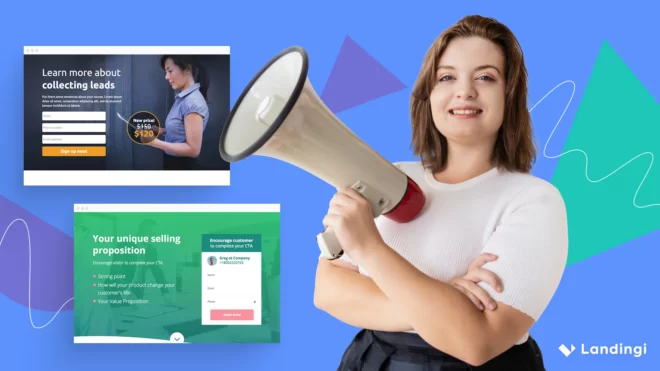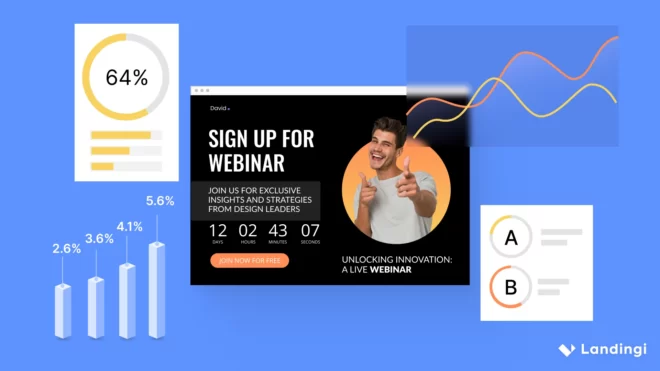An affiliate landing page is a powerful tool for driving conversions and maximizing sales in affiliate marketing campaigns. When an affiliate utilizes landing pages effectively, they can significantly boost their results by adhering to key best practices. A landing page that follows best practices improves user experience, ensuring visitors are guided smoothly toward the call to action, ultimately leading to higher conversions. These conversions lead to higher commissions for the affiliate, making the design and optimization of landing pages crucial for success.
By focusing on landing page best practices such as clear calls to action (CTA), highlighting unique selling points, and optimizing for mobile responsiveness, you can create a seamless and engaging experience. Social proof, urgency tactics, and continuous A/B testing further enhance the page’s effectiveness. Read the whole article and implement these strategies to stand out from the competition and significantly increase your chances of success in affiliate marketing. Get inspired by real-life affiliate landing page examples to see how these practices are applied in successful campaigns.
Let’s discover eight best practices that are especially important for affiliate marketing efforts:
- Create clear and compelling CTA
- Highlight unique selling points
- Simplify the signup process
- Use social proof
- Create a sense of urgency
- Optimize for mobile responsiveness
- Test and optimize continuously (A/B testing)
- Add an FAQ section
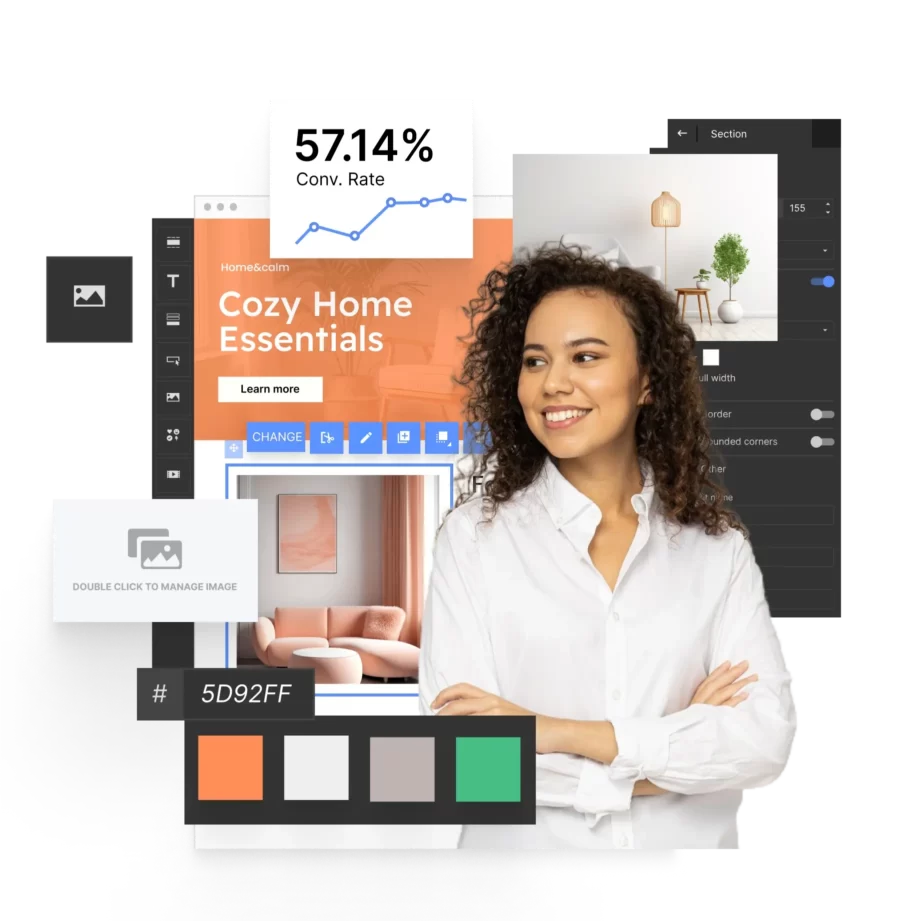
1. Create Clear and Compelling CTA
Your CTA should be impossible to miss and use action-oriented language. A strong, visible, and actionable CTA directs visitors on exactly what to do next, and without it, they may leave the page without converting.
Use action verbs and create a sense of urgency. Avoid generic text like “Submit” or “Click Here.” Instead, use phrases like “Claim Your Exclusive Offer,” “Dive into Profits Today,” or “Seize Your Commission Boost.” If you are promoting an affiliate program, use a CTA like “Sign Up Today and Elevate Your Earnings – Exclusive Offer.”
Conversion Tip: Test different CTA button colors and placements. Often, contrasting button colors that stand out from the rest of the page can lead to higher click-through rates. Ensure CTAs appear at both the top and bottom of the page for users who scroll.
Take a look at the affiliate landing page example featuring an effective call-to-action button:

The Semrush affiliate landing page effectively targets users interested in earning commissions through referrals. The headline, “Shape marketing while boosting your income,” immediately engages visitors by focusing on both their interests and goals. It highlights the opportunity to join the Semrush Affiliate Program, with a clear value proposition of earning commissions on every first purchase and trial. The content is structured simply, making it easy to understand, and the design features bold, attractive elements with a clean color scheme that enhances readability.
The Call-to-Action (CTA), “Apply Now,” is prominently placed both in the navigation bar and in the center of the hero section. Its design, contrasting with the background, ensures it stands out, guiding users directly to the sign-up process. The CTA’s effectiveness lies in its simplicity and strategic placement, encouraging immediate engagement without overwhelming the visitor with too much information upfront.
2. Highlight Unique Selling Points
Unique selling points are the key to making a good first impression on landing pages. Visitors often scan pages quickly, so you need to immediately convey why your offer is superior to others. This is where a well-designed landing page template can make a significant difference. It can help you organize and highlight your unique selling points effectively.
Identify what makes the product or service special. Is it the lowest price? The highest quality? The most comprehensive features? Create bullet points or a short, punchy list that clearly communicates these benefits. For instance, if you are promoting a SaaS product, highlight USPs like “Free Trial,” “No Credit Card Required,” or “24/7 Customer Support.” If you’re an affiliate for a fitness program, your USPs could be “Customizable Meal Plans,” “Access to 100+ Video Tutorials,” or “30-Day Money-Back Guarantee.”
Conversion Tip: Place these USPs above the fold and ensure they are eye-catching. Use contrasting colors for text, icons, or small banners around each unique selling point to grab attention.
Take a look at a Udemy affiliate landing page that highlights unique selling points effectively:
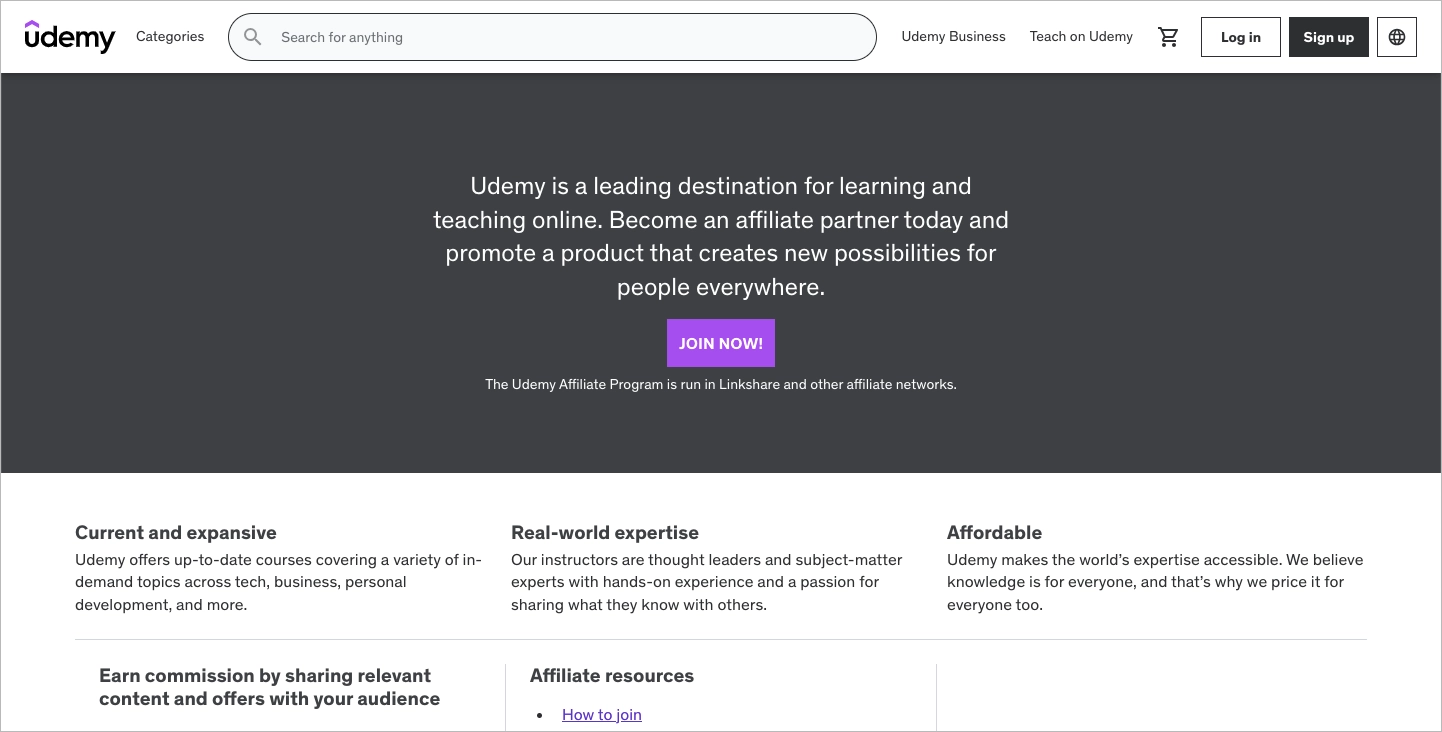
The Udemy Affiliate Program landing page promotes its affiliate program by offering an opportunity for individuals to earn commissions by promoting Udemy courses. The page begins with a brief introduction, highlighting Udemy as a leading online learning platform and urging visitors to join the affiliate program. A strong call-to-action button, “Join Now!”, encourages immediate engagement. The page emphasizes the breadth of Udemy’s offerings, showcasing thousands of online courses across diverse fields such as technology, business, and personal development. This sets up the product’s relevance and value for potential affiliates.
Key selling points, such as up-to-date, affordable courses taught by experts, are prominently displayed. Additionally, the affiliate benefits are outlined in detail, including the availability of promotional assets, custom links, and competitive commission rates. These features are aimed at convincing affiliates of the ease and profitability of partnering with Udemy.
3. Simplify The Signup Process
A complicated signup process can deter potential conversions. The easier it is for visitors to sign up, the more likely they are to complete the action. Minimize the number of fields in the form and only ask for essential information. Use auto-fill and social media sign-up options to make the process faster.
By reducing friction, you create a smooth and user-friendly experience. For example, if you’re promoting an affiliate program, a form that only asks for an email and password, along with a “Sign Up with Google” button, can increase conversion rates. Every extra step in the signup process creates a chance for visitors to abandon the page.
Conversion Tip: Break longer forms into multiple, smaller steps. Show a progress bar to encourage users to complete the process, and ensure the form is optimized for both desktop and mobile devices.
Take a look at an example landing page that provides a simple signup process:
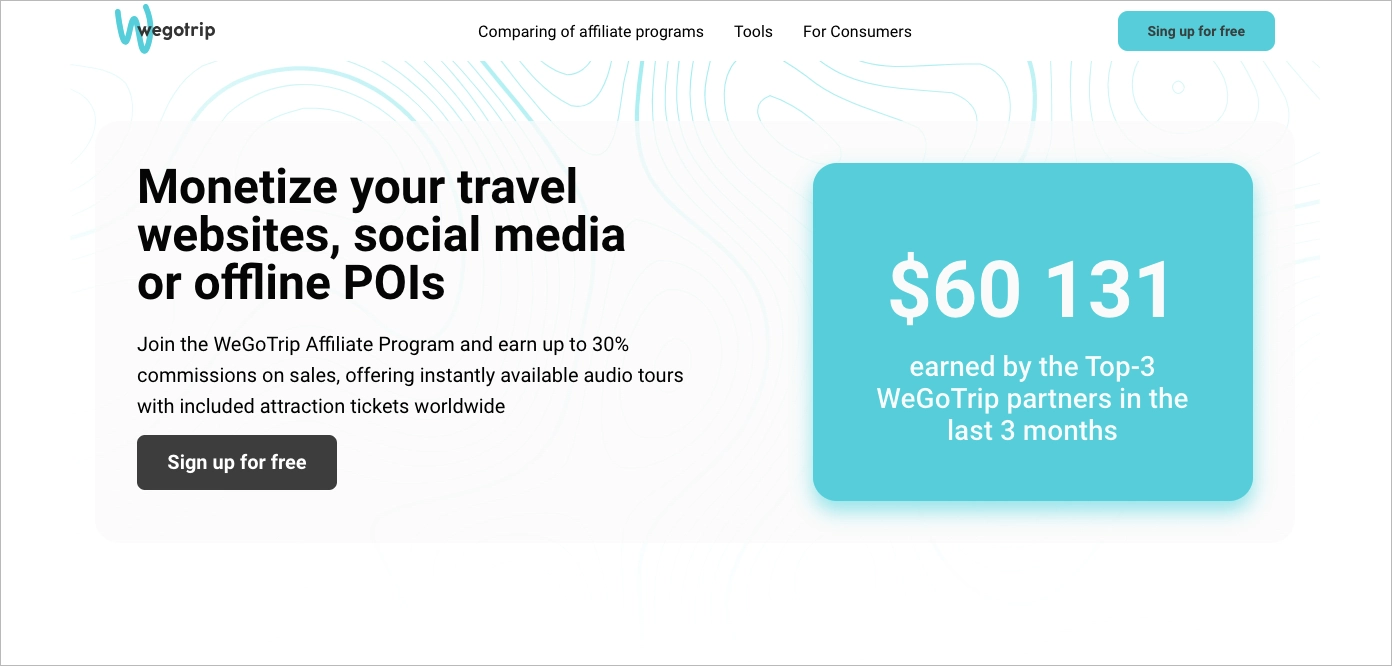
The WeGoTrip Affiliate Program landing page provides a clear and appealing design for prospective affiliates. It is targeted at individuals or companies interested in monetizing their travel-related platforms by earning up to 30% commission on sales of audio tours and attraction tickets. The page presents essential program details, including sign-up benefits, while using visual aids like bright CTAs and testimonials from top earners. Notably, it has a simple signup process that offers multiple options: users can join through a one-click process, which redirects them to a straightforward form with the ability to sign up using Google, Facebook, or email.
The overall design is user-friendly and minimalistic, focusing on attracting affiliates by providing clear instructions on how to start earning quickly. The one-click signup system is a significant strength, simplifying the user experience. Additionally, the use of social login options caters to modern preferences, making it more convenient to join.
4. Use Social Proof
If possible, include real testimonials with full names and photos. Social proof and trust are key factors in decision-making when it comes to an effective affiliate landing page. If your audience doesn’t trust the product or you as an affiliate, they won’t convert.
Use customer testimonials, expert endorsements, product reviews, and badges like “SSL Secured,” “Money-Back Guarantee,” or “Top-Rated by X.” If you’re promoting a product through paid ads, include testimonials from satisfied users along with a review rating (e.g., “Rated 4.8/5 by 500 users”). Include their photos and names for authenticity.
Conversion Tip: Place trust signals near the CTA buttons to reinforce credibility right before the user decides to take action. Social proof can often sway hesitant buyers, making it a powerful tool in the effectiveness of an affiliate landing page.
Take a look at an affiliate landing page example that successfully employs social proof:
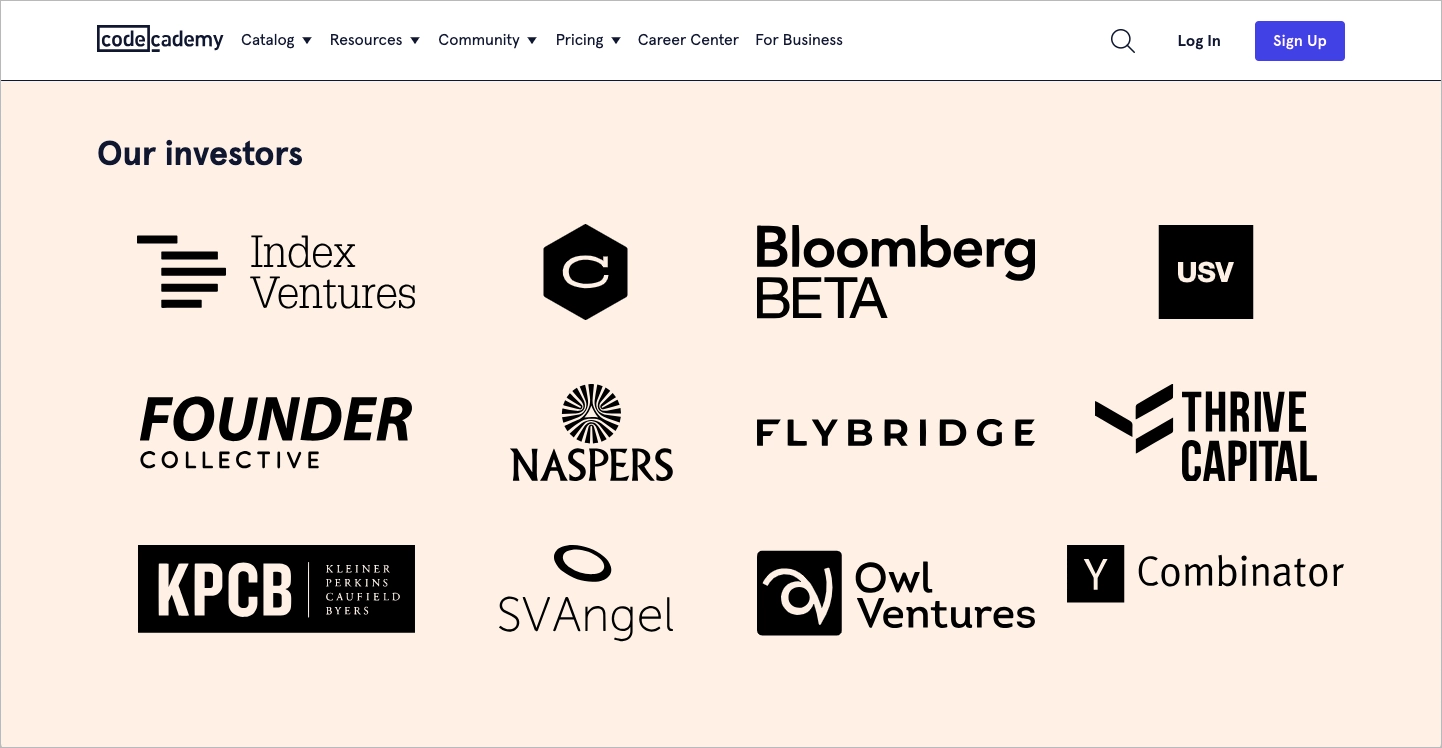
The Codecademy Affiliate Program page is designed to promote Codecademy’s affiliate program, which allows partners to earn commissions by referring users to Codecademy’s Pro membership. The landing page is optimized to communicate its value proposition clearly – highlighting the potential earnings for affiliates and simplifying the sign-up process with a visually clean, user-friendly layout.
One key feature of the page is its use of social proof, particularly by listing reputable investors in Codecademy. Mentioning well-known investors serves as a trust signal, reassuring potential affiliates of the brand’s credibility and stability. This inclusion of social proof leverages the authority of Codecademy’s investors, making affiliates more likely to engage with the program based on confidence in its legitimacy.
5. Create a Sense of Urgency
Urgency taps into psychological triggers that compel users to act quickly, reducing the likelihood of them leaving your page to “think about it.” This tactic is especially effective in creating high-converting landing pages, as it encourages immediate action.
To create a successful affiliate landing page that converts effectively, consider employing tactics that instill a sense of urgency and scarcity among your audience. Use a countdown timer to show when the offer ends, or display low-stock alerts like “Join now, only 5 memberships left!” or “Sign up bonus expires in 2 hours!” If you’re promoting a software subscription as an affiliate, display a countdown timer offering “Join today and lock in your rate before prices increase!”
Conversion Tip: Combine urgency with exclusivity. For instance, say “Only 5 spots available – exclusive for today!” This increases perceived value and pushes the visitor to act immediately.
6. Optimize for Mobile Responsiveness
More than half of all web traffic comes from mobile devices, so ensuring your page is mobile-friendly is essential for conversion. A well-designed landing page not only appeals visually but also functions seamlessly across various devices. Test your landing page on multiple mobile devices to ensure all elements adjust properly. Utilizing a responsive landing page builder can be invaluable, as it allows your page to automatically reformat for different screen sizes.
For an affiliate marketing landing page, it’s important to ensure that key elements such as affiliate links, promotional banners, and call-to-action (CTA) buttons are clearly visible and easily accessible on mobile screens. These elements should be large enough to interact with on a touchscreen and positioned strategically to encourage clicks without the need for zooming or excessive scrolling. Enhancing the user experience increases conversions, making it imperative to focus on mobile optimization.
Conversion Tip: Prioritize landing page load speed for mobile devices. Compress images, reduce scripts, and use AMP (Accelerated Mobile Pages) to boost performance. Aim for a loading time of under 3 seconds. A faster mobile experience can significantly reduce bounce rates and increase conversions.
7. Test and Optimize Continuously (A/B Testing)
A/B testing is essential in optimizing affiliate landing pages. No matter how well-designed these pages might be, there’s always potential for enhancement. By comparing different versions, you can identify the elements that perform best and make data-driven decisions to improve your conversion rates.
Test different versions of your landing page by changing one element at a time, such as the headline, CTA wording, layout, or imagery. Use tools like Google Optimize, Optimizely, or VWO to set up A/B tests and track results. Test whether a video explaining the product converts better than static images, or whether a red CTA button outperforms a blue one.
Conversion Tip: Focus on testing landing page elements that directly impact conversion, such as CTA buttons, headlines, or form fields. Over time, accumulate data on which variations perform better and use those insights to improve not just this landing page, but future ones as well, particularly for your affiliate campaign.
8. Add an FAQ section
A well-organized FAQ section can help address common questions and objections, reducing hesitation and building trust. It also provides clarity on the product or service being promoted, ensuring that potential customers have all the information they need to convert.
Include clear and concise answers to frequent concerns, such as product features, refund policies, or support availability. This can help alleviate any doubts that might prevent users from signing up. If you’re promoting an affiliate program, include questions like “How does the affiliate tracking work?” or “When and how do I receive commissions?”
Conversion Tip: Place the FAQ section near the bottom of the page or include a link to it in the navigation bar. For greater visibility, consider using collapsible sections or tabs so users can quickly find the answers they need without being overwhelmed by too much text.
Take a look at a high-performing landing page that uses an FAQ section successfully:
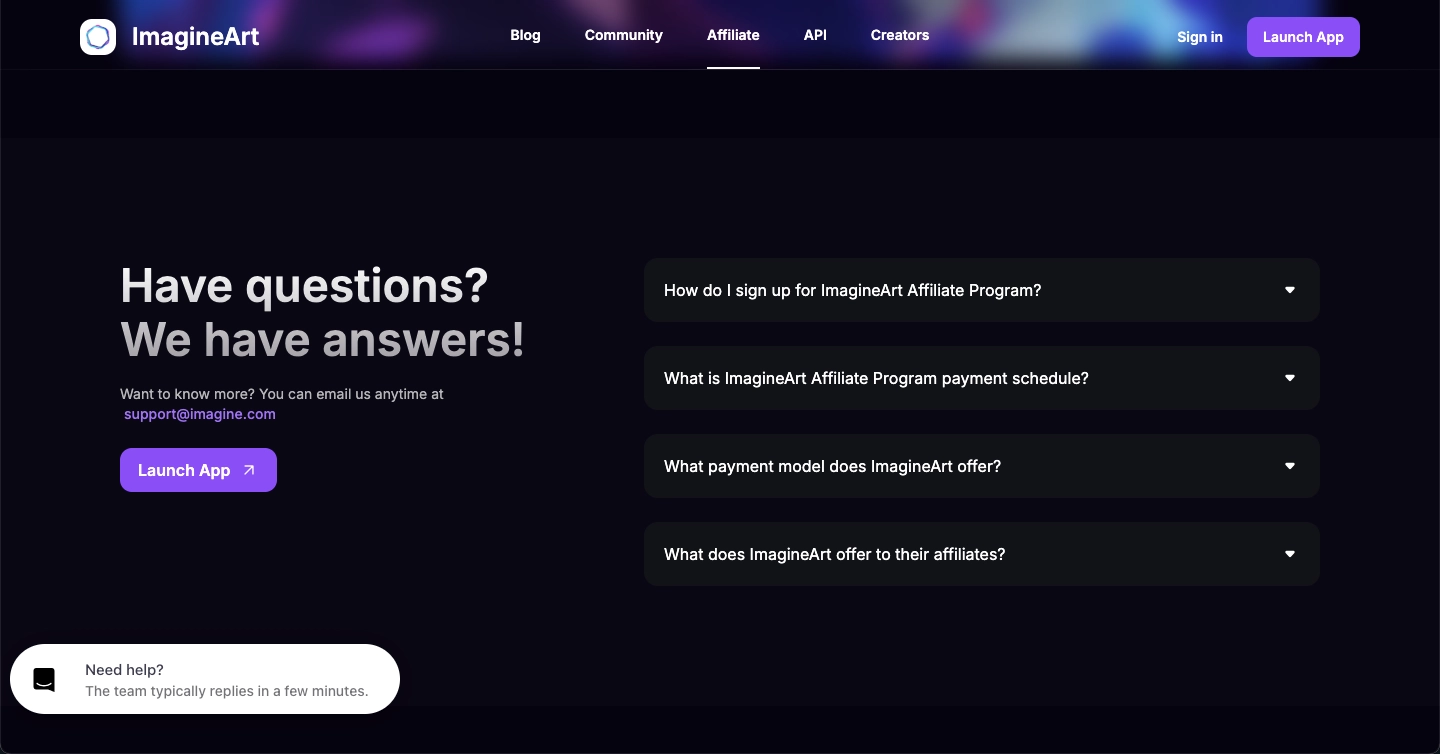
An affiliate landing page for the Imagine AI Affiliate Program is designed to attract affiliates by highlighting key benefits, such as high commission rates (up to 50%), constant support, and timely payments. The landing page uses clear headings, visually engaging images, and call-to-action buttons like “Join Now” to encourage potential affiliates to sign up.
The page also includes an FAQ section, which serves as a key element for addressing common queries that potential affiliates may have. This section is placed toward the bottom of the page under the heading “Have questions? We have answers!” It addresses practical concerns such as how to sign up, the payment schedule, and what ImagineArt offers to affiliates. Each FAQ question is collapsible, allowing users to expand the answers as needed, ensuring a streamlined and user-friendly experience.
What Are The Best Practices For Structuring Affiliate Landing Pages?
The best practices for structuring affiliate landing pages focus on creating a seamless, engaging experience that drives conversions. By combining clear messaging, persuasive visuals, and trust-building elements, you can create a landing page that resonates with visitors while staying compliant with legal and SEO guidelines.
Here are 10 best practices for structuring effective affiliate landing pages:
#1 Clear Headline & Subheadline
Clear headline and subheadline are crucial in designing an effective landing page. A compelling headline grabs attention by communicating value, while a reinforcing subheadline ensures that the page stands out, making a strong initial impression on visitors.
#2 Strong Visuals
Strong visuals, such as high-quality images or videos, can significantly enhance your message and direct attention towards the call-to-action (CTA).
#3 Compelling CTA
Compelling CTA strategies are crucial for capturing visitor attention and guiding them towards conversion. Make your call-to-action prominent and use clear, actionable text (e.g., “Get Started Now”). Place it above the fold and repeat it down the page.
#4 Concise, Benefit-Driven Copy
Concise copy is crucial for capturing attention. Highlight benefits over features using short, persuasive text and bullet points. Address objections and use social proof like testimonials.
#5 Trust Signals
Trust signals, such as badges or reviews, play a crucial role in establishing credibility and trustworthiness online. Include security badges, brand logos, and honest testimonials to build credibility. Be transparent about affiliate relationships.
#6 Mobile Optimization & Fast Loading
Mobile optimization and fast loading are crucial to ensuring the page is responsive for mobile and loads quickly to reduce bounce rates, enhancing the user experience on your affiliate landing page.
#7 SEO & Simplicity
SEO and simplicity go hand in hand; to enhance website appeal, optimize for relevant keywords and provide content that matches visitor intent. Keep the design clean with minimal distractions and lots of white space.
#8 A/B Testing
A/B testing is essential for continually improving your marketing efforts. Regularly test different headlines, CTAs, and visuals to see what works best, optimizing your landing page’s performance.
#9 Incentives
Incentives, such as special promotions or rewards, can be powerful tools. Use exclusive deals or bonuses, and create urgency with limited-time offers when possible.
#10 Legal Compliance
Legal compliance is essential for any online presence. To maintain your landing page’s integrity, disclose affiliate links clearly and ensure compliance with data protection regulations.
Explore Affiliate Landing Page Tips and Boost Your Business with Landingi
Creating landing pages that maximize conversions is essential for affiliate marketers aiming to drive results. By following the best practices outlined, such as clear CTAs, social proof, FAQ section, and A/B testing, you can optimize your landing page visitors’ experience, leading to higher conversions. And since conversions lead to higher commissions, it’s crucial to get your landing page right. Implementing engaging visuals and concise messaging on affiliate marketing landing pages significantly enhances their effectiveness in attracting potential leads.
Landingi makes building high-converting landing pages for affiliate marketing campaigns effortless. Its drag-and-drop editor allows you to craft professional, eye-catching pages without the need for coding. The platform offers a variety of pre-designed templates tailored for affiliate programs, featuring layouts designed to highlight your offer’s unique selling points, build trust with testimonials, and place compelling calls to action where they’re most effective. With Smart Sections, Landingi takes customization to the next level, letting you easily reuse and update blocks of content across multiple landing pages, saving you time while maintaining consistency.
The platform also offers powerful A/B testing capabilities, enabling you to experiment with different elements and continuously optimize for better results. With pop-ups and exit-intent forms, you can re-engage visitors before they leave and capture more leads. Landingi’s fully mobile-responsive designs ensure that your landing pages look flawless on any device, providing a seamless experience for every visitor. If you’re ready to boost your affiliate commissions, try Landingi for free and start building pages that convert!

